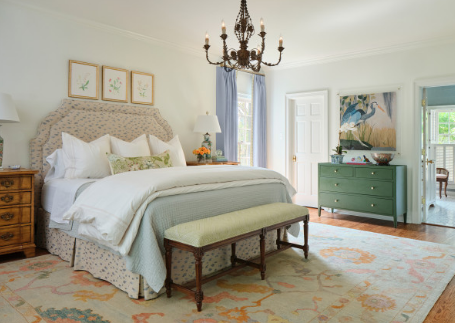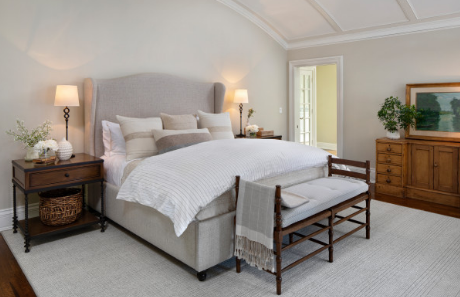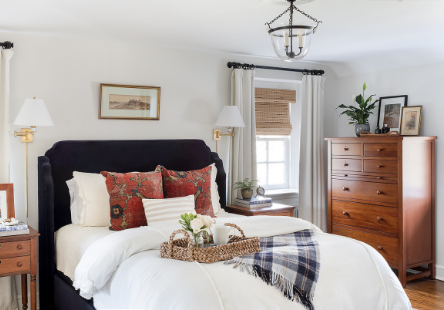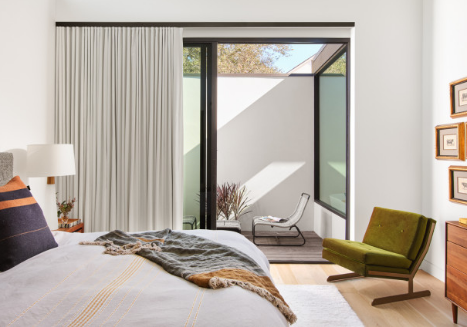

We spent more time in the bedroom than in any other room in the house. Even though we slept most of the time, our day ended and started there. A well-organized and well-thought-out space can improve your mood when you need to sleep and give your day a good start when you wake up.
Planning a bedroom starts with understanding the standard bed size, knowing which one you prefer and which one fits your plans. Other bedroom homes come in a variety of sizes. Once you’ve decided on the size of your room and bed, you can make an informed decision about your dresser, wardrobe, bench, chair, bedside table, and more.

A king-size bed offers great comfort for two people and extra space for those who tend to stretch out their limbs while sleeping. All beds dominate a room, but king-size beds in particular need to be aesthetically pleasing. They are available in two sizes:
For beds of any size, you can find furniture with extended footrests and built-in bedside tables. Think carefully about buying larger furniture. You may need to move to another house in the future, and bulky items may be difficult to fit into another space.

Goldilocks may opt for a queen-size bed. The size is just right for two people, no need for a bigger room, like a king size bed. The queen size bed is 60 inches wide and 80 inches long, and is also 84 inches long. They are sized for traditional furniture, such as four-poster bed frames.

Full-size beds or double beds are 54 inches wide and 75 inches long, with 80-inch long beds also available. A full-size bed can comfortably accommodate two taller people, so if you have space and plan to use it frequently for yourself or your guests, consider upgrading to a queen-size bed. Still, the full size is also suitable for smaller bedrooms.

A standard single mattress is 39 inches wide and 75 inches long. You can find slightly longer sheets (80 inches or 84 inches), but finding them can be more difficult. Twin beds are perfect for small bedrooms because you can place the bed in the corner to make room for slippers and facilitate circulation. The twin beds are perfect for younger children, who feel more comfortable in bed than in a queen bed.

A standard single bunk bed is 30 to 33 inches wide and 75 inches long. The height required depends on the furniture you buy for them or how you configure a custom design.

The smallest bed furniture is a baby cot. Crib mattress sizes can vary, but cribs are typically 28 inches wide and 52 inches long. Cribs and other mattresses vary in mattress thickness.

You may need to put a bench at the foot of the bed, which is the perfect place to put on your shoes and socks without disturbing the freshly made bed. Benches can be of any size, as long as they fit the width of the bed and leave enough space for people to walk around them. The grouped upholstered cubes form a flexible bench that can be broken down and moved around the room, used as a footstool.

Bedside tables can be huge. The larger one is about 20 inches deep and 40 inches wide. Also consider height carefully. Some mattresses on the market are stacked relatively high, and it would be convenient to have the top of the bedside table about the same height as the top of the mattress. The most common nightstand height is 26 to 28 inches. Smaller bedside tables are suitable for smaller spaces and smaller beds.

Dressers also vary greatly in size, but the most important thing to consider when planning a bedroom is that there should be a wall to accommodate the bed and a wall to accommodate the dresser.
You can find dressers as narrow as 42 inches, however, most people want a dresser that measures 60 to 72 inches. Dressers are typically around 32 to 36 inches tall, but some designs are taller. It’s less common to have a mirror above your dresser than you used to, but you may want to keep one in mind when planning your room.

Narrower and taller than a dresser, it can fit into tighter wall spaces. They are also tall enough for standing and are a great place to empty your pockets and put small items. Most are 36 to 54 inches wide and 14 to 20 inches deep. The height is typically 48 to 60 inches.

Small, comfortable upholstered chairs add a sense of space to the bedroom. It’s easy to overlook this element for a new bedroom plan, but a chair or two can be a good place to rest away from the rest of the family. Leave about 36 inches of space in your floor plan, as well as the necessary circulation space.
Recliners require more space but can add a touch of opulence to the bedroom. Allowable widths are 66 to 72 inches and depths are 36 to 40 inches.

If you want to have a lounge area in your bedroom, you’ll need plenty of space for a table, chairs, and loveseat sofa, as well as a circulation area to make it work. In addition to your requirements for beds, dressers, and boxes, you should set aside at least 8 x 8 feet of space. You’re more likely to need a 10 x 10 foot area. The rectangular room is 21 feet long and 14 feet wide and accommodates a bedroom with a king-size bed and sitting area.

This cutaway shows a large bedroom measuring 17 feet, 8 inches, and 14 feet wide. The furniture is of standard size, and the principle of use of space applies to many bedrooms.
With such a large space, you will have an entry point and a circulation route, and perhaps a changing area or rest area. Next to the bed, you need the “slipper rest area”, my term refers to the area used to lift the foot off the ground and into the subconscious plane.
Keep the inlet and circulation width at 30 to 36 inches. The size of the changing and lounge areas depends entirely on your needs and the space available. These areas don’t have to be as spacious as they appear in the picture, but you can leave a circular area in front of the furniture that is at least 36 inches in diameter. Leave 30 inches of diameter space for your slippers.

It’s not easy to put a bed in the attic space. Keep in mind that once the slope of the ceiling is less than 60 inches, in some areas, the area below the lower slope does not count as habitable square footage. Steeper, sloping roofs are more suitable for attic rooms because the height of the ceiling rises rapidly. Keep in mind that anything below 72 inches is difficult to walk underneath, and anything below 60 inches is less suitable for use as furniture.